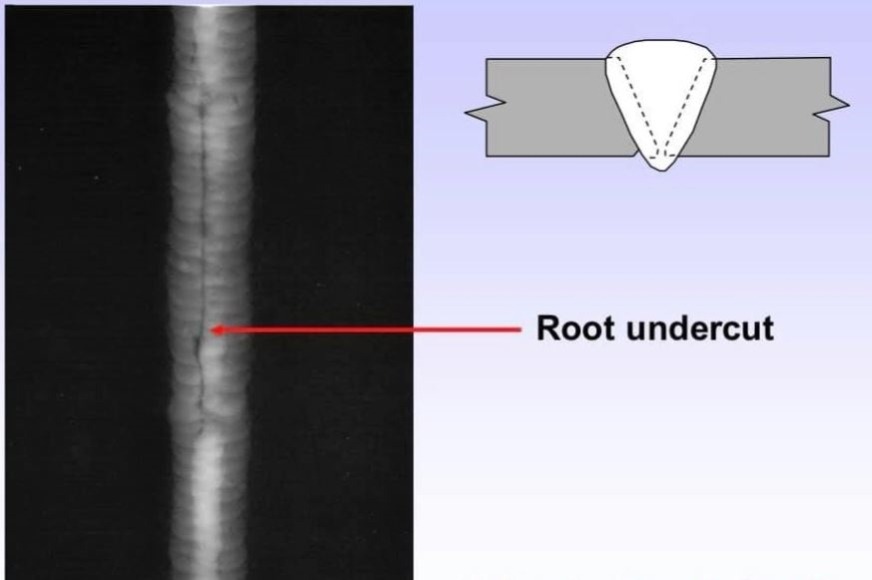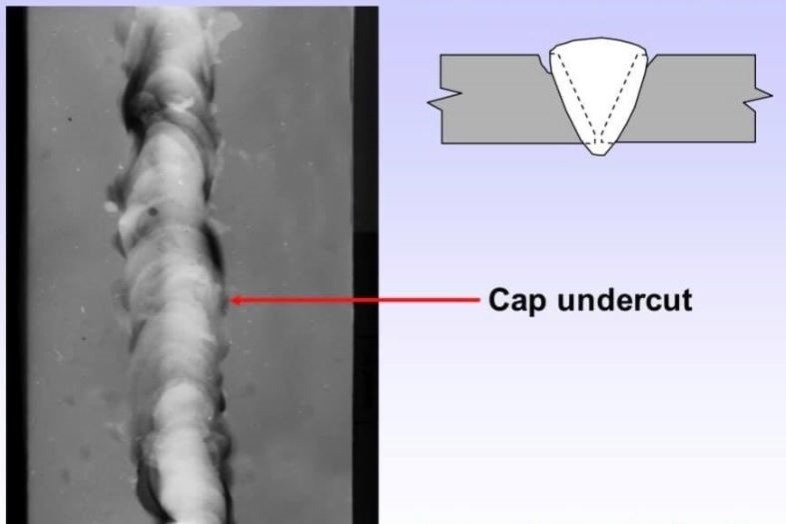Your Total Manual to Preventing Weld Undercut Like a Pro
Necessary Tips for Welders: Protecting Against Undercut Welding and Ensuring Stronger Weld Joints
In the realm of welding, achieving strong and resilient weld joints is the foundation of producing premium work. Nonetheless, one typical difficulty that welders commonly come across is undercut welding, which can compromise the integrity of the weld joint. By understanding the aspects that contribute to undercutting and implementing the right techniques and safety measures, welders can successfully stop this problem and make certain the long life and toughness of their welds. Allow's discover some necessary ideas that can help welders browse this difficulty and boost the high quality of their welding tasks.

Comprehending Undercut Welding
Undercut welding is a typical welding flaw that happens when the weld metal fails to properly load the groove and results in a groove-like clinical depression along the weld grain. This flaw weakens the weld joint, making it at risk to cracking and failing under tension. Damaging can be brought on by different elements, including too much welding current, high welding rate, improper electrode angle, inaccurate electrode dimension, and bad welding technique.
Among the main reasons for undercut welding is a discrepancy in between the welding current and the welding rate. If the welding current is expensive or the welding rate is as well quick, the weld metal might not properly load the groove, leading to damaging. In addition, making use of an electrode that is as well large can result in a comparable result, as the excess metal can not properly flow right into the groove.
To prevent undercut welding, welders must ensure they are using the correct welding criteria, keep an ideal electrode angle, choose the ideal electrode size, and practice correct welding strategies. By dealing with these factors, welders can minimize the threat of damaging and create stronger, much more reputable weld joints.
Correct Welding Technique
Reliable welding technique plays an essential duty in guaranteeing the high quality and integrity of weld joints. Proper welding technique includes a mix of adherence, ability, and precision to finest techniques. One essential element of appropriate welding strategy is preserving the correct angle and distance in between the welding weapon and the work surface. Welders have to likewise pay very close attention to the traveling rate and warmth input to stop concerns like damaging, porosity, or insufficient combination.
Additionally, a constant and consistent hand activity is necessary for producing strong and resilient weld joints. Welders must go for smooth, consistent movements to make sure also circulation of the weld product. Correct manipulation of the welding weapon and filler material is also vital to accomplishing optimal penetration and combination.
Moreover, regulating the warmth input and selecting the suitable welding criteria based upon the material being bonded are crucial aspects in accomplishing high-quality welds - Preventing weld undercut. Welders should adhere to the suggested setups supplied by welding procedure specifications and readjust them as required based upon the particular needs of the job. By mastering proper welding techniques, welders can substantially boost the strength and integrity of their weld joints
Picking the Right Electrode
When considering the relevance of picking the ideal electrode in welding applications,Maintaining the proper angle and range between the welding gun and the workpiece is essential. The option of electrode plays an essential function in identifying the quality top article and toughness of the weld joint. Electrodes can be found in numerous types, each designed for particular objectives and products.
Firstly, choosing the proper electrode diameter is essential. Thinner electrodes are suitable for welding slim products, while thicker electrodes this article are better for thicker products and higher heat applications. Matching the electrode diameter to the thickness of the workpiece aids attain a well balanced weld.
Second of all, understanding the material structure of the electrode is vital. Various electrodes are designed for welding specific products like steel, stainless-steel, aluminum, or cast iron. Utilizing the proper electrode product makes certain excellent blend and decreases the threat of flaws in the weld.
Finally, thinking about the welding setting and technique is crucial when picking the electrode kind. For example, particular electrodes are better matched for vertical or overhead welding settings, while others function well for flat or straight settings. Choosing the appropriate electrode based upon the welding technique boosts the general weld top quality and integrity.
Preparing the Base Metal
To make sure a successful welding process, what initial actions should be taken when preparing the base metal for welding? Furthermore, any existing weld material or deposit from previous welding need to be gotten rid of to make certain a tidy surface for the new weld.

Performing Post-Weld Examinations

After performing these assessments, welders should compare the results versus industry criteria and job demands to guarantee that the weld joint meets all necessary requirements. Any insufficiencies or discrepancies uncovered throughout the post-weld inspection must be immediately addressed with suitable restorative actions to ensure the weld's honesty. By vigilantly performing post-weld assessments and immediately resolving any type of issues, welders can support the high quality and integrity of their job, eventually adding to the safety and longevity of the bonded structures.
Final Thought

In conclusion, preventing undercut welding and ensuring more powerful weld joints need a mix of proper welding method, picking the appropriate electrode, preparing the base steel properly, and conducting post-weld evaluations. By understanding the root causes of undercut welding and executing the required precautions, welders can generate top quality weld joints that fulfill sector requirements and guarantee the architectural honesty of the bonded components.
Undercut welding is a typical welding issue that takes place when the weld steel fails to properly load the groove and results in a groove-like anxiety along the weld grain (Preventing weld undercut). Undercutting can be triggered by different factors, consisting of excessive welding existing, high welding rate, incorrect electrode angle, inaccurate electrode size, and bad welding method
One of the primary reasons for undercut welding is an inequality in between the welding current and the welding rate. If the welding current is also high or the welding rate is as well fast, the weld metal might not effectively load the groove, leading to undercutting.Keeping the proper angle and range between the welding weapon and the workpiece is essential when thinking about the value of choosing the appropriate electrode in welding applications.